
For more FAQs


For more FAQs
WELCOME! You’ve begun a richly rewarding musical journey and we want you to feel comfortable at the SSO. If there’s something you’ve always wanted to ask, check out our FAQ!
WHAT SHOULD I WEAR?
We don’t enforce any dress code. Many come in business attire or smart casual outfits, and that’s great.
WHEN SHOULD I CLAP?
Many pieces of music have multiple sections called movements. E.g. most concertos have three movements while symphonies usually have four. Traditionally, applause is only expected at the end of the entire work, rather than between each movement.
If you’re unsure, check our programme booklet, or wait for the conductor to put down the baton at the end, and acknowledge the orchestra and audience.
Video and photography of any kind are not permitted when musicians are actively performing. However, non-flash photography is allowed during bows and applause. Take home a musical memory and tag us on @singaporesymphony!

For the enjoyment of all patrons during the concert:
• Please switch off or silence all electronic devices.
• Please minimise noises during performance. If unavoidable, wait for a loud section in the music.
• No photography, video or audio recording is allowed when artists are performing.
• Non-flash photography is allowed only during bows and applause when no performance is taking place.
Go green. Digital programme books are available on www.sso.org.sg.
Photographs and videos will be taken at these events, in which you may appear. These may be published on the SSO’s publicity channels and materials. By attending the event, you consent to the use of these photographs and videos for the foregoing purposes.
Since its founding in 1979, the Singapore Symphony Orchestra (SSO) has been Singapore’s flagship orchestra, touching lives through classical music and providing the heartbeat of the cultural scene with its 44-week calendar of events.
In addition to its subscription series concerts, the orchestra is well-loved for its outdoor and community appearances, and its significant role educating the young people of Singapore through its school programmes. The SSO has also earned an international reputation for its orchestral virtuosity, having garnered sterling reviews for its overseas tours and many successful recordings. In 2021, the SSO clinched third place in the prestigious Orchestra of the Year Award by Gramophone. In 2022, BBC Music Magazine named the SSO as one of the 21 best orchestras in the world.
In July 2022, the SSO appointed renowned Austrian conductor Hans Graf as its Music Director, the third in the orchestra’s history after Lan Shui (1997–2019) and Choo Hoey (1979–1996). Prior to this, Hans Graf served as Chief Conductor from 2020.
The orchestra performs over 60 concerts a year, and its versatile repertoire spans all-time favourites and orchestral masterpieces to exciting cutting-edge premieres. Bridging the musical traditions of East and West, Singaporean and Asian musicians and composers are regularly showcased in the concert season. The SSO makes its performing home at the 1,800-seat state-of-theart Esplanade Concert Hall. More intimate works, as well as outreach and community performances take place at the 673-seat Victoria Concert Hall, the Home of the SSO.
Beyond Singapore, the SSO has performed in Europe, Asia and the United States. In May 2016 the SSO was invited to perform at the Dresden Music Festival and the Prague Spring International Music Festival. This successful fivecity tour of Germany and Prague also included the SSO’s second performance at the Berlin Philharmonie. In 2014, the SSO’s debut at the 120th BBC Proms in London received praise in major UK newspapers The Guardian and The Telegraph. The SSO has also performed in China on multiple occasions.
The SSO has released more than 50 recordings, with over 30 on the BIS label. Recent critically acclaimed albums include Scriabin’s Poems of Ecstasy and Fire and Shostakovich’s Jazz & Variety Suites. In 2023, a Four Seasons album on Pentatone and a complete Mozart Violin Concerto cycle with Chloe Chua and Hans Graf will be released. The SSO also leads the revival and recording of significant works such as the Kozłowski Requiem, Ogerman’s Symbiosis (after Bill Evans) and concertos by Paul von Klenau.


The SSO has collaborated with such great artists as Vladimir Ashkenazy, Gustavo Dudamel, Charles Dutoit, Joe Hisaishi, Neeme Järvi, Okko Kamu, Hannu Lintu, Andrew Litton, Lorin Maazel, Martha Argerich, Ray Chen, Diana Damrau, Stephen Hough, Janine Jansen, Leonidas Kavakos, Lang Lang, Yo-Yo Ma, Gil Shaham and Krystian Zimerman.
The SSO is part of the Singapore Symphony Group, which also manages the Singapore Symphony Choruses, and the Singapore National Youth Orchestra, as well as the VCHpresents chamber music series, the Singapore International Piano Festival and the biennial National Piano & Violin Competition.



The mission of the Group is to create memorable shared experiences with music. Through the SSO and its affiliated performing groups, we spread the love for music, nurture talent and enrich our diverse communities.
Singapore Symphony Orchestra
Mario Venzago was, until summer 2021 and for 11 years, the Principal Conductor and Artistic Director of the Bern Symphony Orchestra. Prior to that, he has led as Principal Conductor or General Music Director of the Indianapolis Symphony Orchestra, the Gothenburg Symphony Orchestra, the Basque National Orchestra in San Sebastian, and the Basel Symphony Orchestra. He was also Principal Conductor of the Royal Northern Sinfonia, Artist in Association of the Finnish Tapiola Sinfonietta and Artistic Director of the Baltimore Summer Fest, as successor to Pinchas
Zukerman and David Zinman. Mario Venzago has conducted the Berlin Philharmonic Orchestra, the Leipzig Gewandhaus Orchestra, the orchestras in Philadelphia and Boston, the London Philharmonic Orchestra, the Filarmonica della Scala and the NHK Symphony Orchestra.
In the season 2022/23 Mario Venzago conducted Singapore Symphony Orchestra, Baltimore Symphony Orchestra, Yomiuri Nippon Symphony Orchestra, Museumsorchester Frankfurt, Bochumer Symphoniker, Copenhagen Philharmonic Orchestra, Tampere Philharmonic Orchestra, Tapiola Sinfonietta, Deutsche Radio Philharmonie, Deutsche Staatsphilharmonie Rheinland-Pfalz and many others.
Several of his CDs have won international prizes such as the Grand Prix du Disque, the Diapason d’or and the Edison Award. The project “The other Bruckner” with the recording of all ten symphonies was released on the CPO label. A collaboration with Sony Classical led to the spectacular recording of Franz Schubert’s “Unfinished” Symphony with the Kammerorchester Basel, completed and conducted by Mario Venzago, and the recording of all serenades and symphonies of Johannes Brahms. Most recently in 2022, Prospero released his recording of Schubert’s reconstructed 7th Symphony with Bern Symphony Orchestra. His recording of the Suite from Bernard Herrmann’s Wuthering Heights with Singapore Symphony Orchestra was released on Chandos Records in June 2023.
Chloe Chua (b. 2007) shot to international stardom after winning the joint 1st Prize at the 2018 Yehudi Menuhin International Competition for Young Violinists.

The young star from Singapore has also garnered the top prize at the 24th Andrea Postacchini Violin Competition, 3rd prize at the 2017 Zhuhai International Mozart Competition, as well as accolades at the Thailand International Strings Competition (Junior Category Grand Prize) and the Singapore National Piano & Violin Competition (1st Prize, Junior 2017, 3rd Prize, Junior 2015).
Her stunning musicality despite her young age has captured the hearts of audiences around the world, and her performances have taken her to concert halls and orchestras across the U.S.A., U.K., Italy, Germany, Saudi Arabia, China, Thailand and Singapore, in festivals such as the Copenhagen Summer Festival, New Virtuosi Queenswood Mastercourse, Atlanta Festival Academy and the Singapore Violin Festival.
For the 2023/24 season, Chloe extends her Artist-In-Residency at the Singapore
Symphony Orchestra for a second season, performing several concerts and recording projects across 2023 and 2024. Her debut album of The Four Seasons and Locatelli’s Harmonic Labyrinth will be followed by a set of complete Mozart Violin Concertos with the Singapore Symphony Orchestra and Hans Graf.
Chloe has been with Singapore’s Nanyang Academy of Fine Arts (NAFA) School of Young Talents since age 4, and is currently under the tutelage of Yin Ke, leader of their strings programme.
Chloe performs on a Giovanni Battista Guadagnini, Milan, 1753, on generous loan from the Rin Collection.
CHLOE CHUA violin/Artist-In-ResidenceEudenice Palaruan studied at the University of the Philippines College of Music, majoring in composition and choral conducting. He took further training in choral conducting at the Berliner Kirchenmusikschule, Germany. He graduated doctor of musical arts at St. Paul University Manila.

He was a singer, resident composer/ arranger, and assistant choirmaster of the Philippine Madrigal Singers. In addition, he performed with the Berlin Spandauer Kantorei, the World Youth Choir, and sang countertenor with the Berlin Monteverdichor.
In addition, he was the principal conductor of the San Miguel Master Chorale. For years, he has been the resident conductor of the International Bamboo Organ Festival, where he performed and recorded significant selections of Latin-American baroque music. With his active involvement in the choralization of Philippine and other Asian indigenous music, he premiered a substantial volume of new Asian choral works. In addition, he was often invited to give lectures on non-Western vocal aesthetics.
Eudenice also arranges for the SSO choruses and the SSC community outreach programmes. In addition, the SSO choruses have premiered new choral works written by local composers and arrangers in Singapore under his direction.
He taught composition and choral conducting in institutions such as the University of the Philippines College of Music, the Asian Institute for Liturgy and Music, and St. Paul University College of Music and the Performing Arts. In addition, he teaches at the Singapore Bible College School of Church Music and directs the SBC Chorale. Eudenice is often invited to adjudicate in international composition competitions and give masterclasses in choral conducting.
© MICHELLE TNG YINGWong Lai Foon has been a driving force behind the development and growth of the Singapore Symphony Children’s Choir (SSCC) since its inception in 2006. Appointed Choirmaster in 2015 and armed with a mission to nurture young voices and inspire choral excellence, she led in the expansion of the SSCC’s training programme to include six preparatory ensembles, as well as the formation of the Singapore Symphony Youth Choir in 2016.
With repertoire ranging from Baroque to opera to contemporary and popular music, she has directed the SSCC and SSYC in a wide array of concerts, often receiving praise for the choirs’ beautiful tone and sensitivity. She has prepared the choirs in collaborations with renowned conductors and performers such as Stephen Layton, The King’s Singers, and Sofi Jeanin and la Maîtrise de Radio France. The SSCC has also had the distinction of being invited to perform at state functions.
Wong has commissioned and premiered treble choir works by local composers and has also arranged for the SSCC and SSYC. Her efforts to educate and inspire singers extend into the community through
workshops, talks, as well as adjudicator, chorus-master and guest-conductor roles. Some ensembles that she has worked with include The Philharmonic Chamber Choir, Singapore Symphony Chorus, Singapore Lyric Opera, Hallelujah Singers, and Methodist Festival Choir. She holds a master’s degree in choral conducting from Westminster Choir College, USA.
 WONG LAI FOON Choirmaster
WONG LAI FOON Choirmaster
For over four decades, the Singapore Symphony Chorus (SSC) has been bringing together passionate and talented choristers from all walks of life to celebrate the best of symphonic music-making, and to create music that moves, transcending language and culture.
More than just a choir, the SSC is a warm and vibrant community for lifelong social connections beyond the stage. Seasoned performers at the Victoria Concert Hall and the Esplanade, the chorus’s committed group of singers come together week after week to hone their artistry and volunteer their time to deliver some of the most challenging choral classics to the highest standards.
Led by world-class conductors including Okko Kamu, Lan Shui, Lim Yau, Masaaki Suzuki and Sofi Jeannin, the chorus has amassed an impressive repertoire such as Tippett’s A Child of Our Time, Arvo Pärt’s Te Deum, Britten’s War Requiem, and Bach’s St John Passion, amongst others, since its founding in 1980.
With their dedication towards presenting outstanding performances, the SSC is the pinnacle of choral excellence in Singapore and a testament to the power of music and how it connects people across cultures and generations.
 Director
Eudenice Palaruan Choral
Shane Thio rehearsal pianist
Director
Eudenice Palaruan Choral
Shane Thio rehearsal pianist
Energetic and full of dynamism, the Singapore Symphony Youth Choir (SSYC)’s choristers embody a zeal for artistic growth that inspires and pushes boundaries.
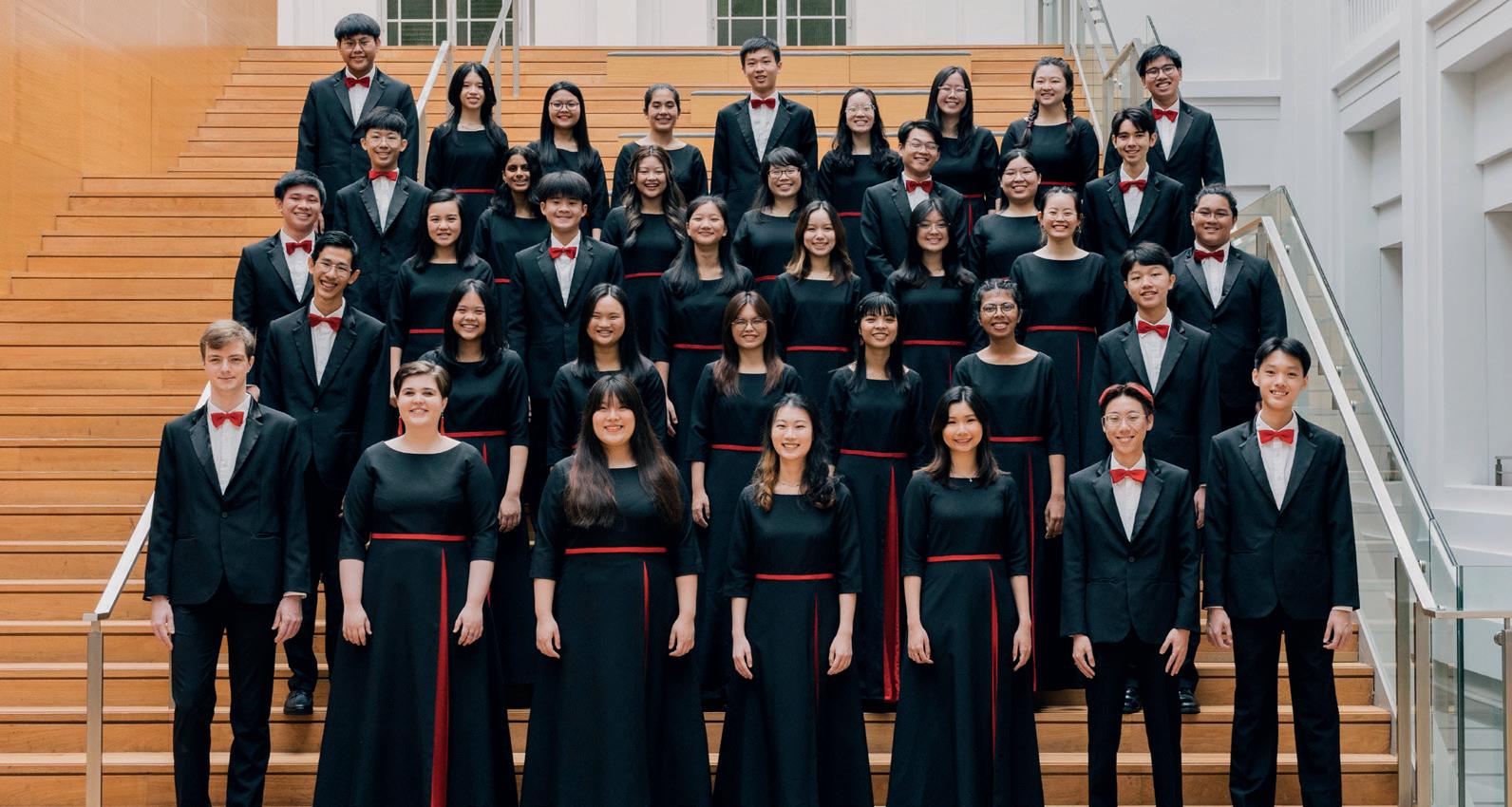
Comprised of a myriad of vibrant personalities aged between 17 and 28, the cool collective welcomes like-minded singers to share their journey of youthful passion for symphonic choral music-making, alongside the national orchestra! Performing regularly at the Victoria Concert Hall and the Esplanade, the SSYC is a group of dedicated singers who enjoy coming together to explore some of the most challenging and beloved choral works across styles and genres.
Since 2016, SSYC has had the privilege of performing under the baton of renowned conductors such as Lan Shui, Hans Graf, and Stephen Layton. Their repertoire boasts of musical highlights including Scriabin’s Prometheus, Puccini’s La Bohème, Tallis’s Why Fumeth in Fight, Faure’s Requiem and recordings of Borodin’s Polovtsian Dances and Mahler’s Symphony No. 2.
With the unique opportunity to learn from world renowned musicians and be part of a community that inspires passion, all while creating a professional sound, SSYC is a social journey to reimagine classical music and choral excellence.
Wong Lai Foon Choirmaster Evelyn Handrisanto rehearsal pianistSINGAPORE SYMPHONY CHORUS
Karen Aw
Laurence Biard Tertois
Janice Chee
Alexis Chen
Julie Demange Wodtke
ALTO
Chan Mei Yoke
Chng Xin Bei
Friederike Herrmann
Truly Hutapea
Susan Kurniawati
Dorothy Lee-Teh
Jean-Michel Bardin
Chng Chin Han
Chong Wei Sheng
Jeroven Marquez
David Maund
Grace Goh
Kaitlyn Kim
Selina Kwek
Sarah Santhana
Andrea Yenny Sjah
Nelia Soelistia
Stacey Wang Espera
Sarah Tang
Gladys Torrado
Yeo Mui
Wendy Lim
Dorcas Lo
Sharon Low
Daisy Natalia
Ng Beng Choo
Ratna Sutantio
Elsie Tan
Tan Seow Yen
Wang Jiunwen
Shoumin Low
BASS
Ronald Ooi
Samuel Pažický
Rac Roldan
Ian Tan
Ben Wong
SINGAPORE SYMPHONY YOUTH CHOIR
SOPRANO
Serene Cheong
Hana Kasai
Janice Lim
Desiree Seng
Samyukta Sounderamann
Carine Tan
Jasmine Towndrow
Ellissa Sayampanathan*
*Choral Fellow
ALTO
Elizabeth Goh
Erin Ho
Trinetra Kumarasan
Ong Sherlyn
Violet Ong
Tan Yulin
Tan Yuqing
Zhang Jingqi
Ang Jian Zhong
Winsen Citra
Arthur Davis
Paul Kitamura
Wong Hin Yan
TENOR
Cris Bautro
Alfonso Cortez
Gaston Liew
Seifer Ong
BASS
Bryan Carmichael
Chai Chang Kai
Loy Sheng Rui
Dominic Tang
Joshua Tan
Wong Zhen Wei
A premier body for classical choral singing, the Singapore Symphony Choruses comprise the Singapore Symphony Chorus, Singapore Symphony Youth Choir and Singapore Symphony Children’s Choir.

Drawing membership from diverse ages, nationalities and walks of life, our Choruses embody a comprehensive singing ecosystem that nurtures the brilliance of our brightest young talents, inspires youthful passion for the art and celebrates the best of choral excellence!
Scan the QR code and visit our website for more details on audition and training opportunities.
@
Berlin-based Venezuelan conductor
Rodolfo Barráez made his debut with the Konzerthausorchester Berlin in 2020. A natural communicator with infectious charisma, Rodolfo brings remarkable vivacity, sensitivity, and zeal to his artistry. The 2022/23 season sees him join the Singapore Symphony Orchestra as Associate Conductor, as well as the Los Angeles Philharmonic as Conducting Fellow. Rodolfo is also Conductor in Residence at the Paris Opera.
In 2023, Barráez was awarded the 1st & Orchestra Prize at the 2nd Hong Kong International Conducting Competition. He also won 1st Prize at the 2018 Universidad Nacional Autónoma de México International Conducting Competition (OFUNAM), and 2nd Prize at the 2020 Inaugural SiemensHallé International Conductor Competition in Manchester, leading to immediate invitations with The Hallé.

He completed his Bachelor’s and Master’s conducting studies at Hochschule für Musik Hanns Eisler in Berlin, and previously his Bachelor’s at the National Experimental University of the Arts in Venezuela. In 2022, he was selected as Conducting Fellow at the Verbier Festival.
Rodolfo made his debut with Los Angeles Philharmonic in early 2023 at the Walt Disney Concert Hall. Future highlights include performances with the Hong Kong Sinfonietta, RTVE Symphony Orchestra, Gävle Symphony Orchestra, Simón Bolívar Symphony, among others.
Strongly influenced by his own remarkable education as part of El Sistema under the guidance of José Antonio Abreu and Teresa Hernández, Rodolfo is committed to contributing to music education. In 2019, Rodolfo founded the Falcón Conducting Workshop; an organization that nurtures and supports the development of emerging conductors through masterclasses and workshops in his hometown as well as worldwide at renowned institutions.
“On the strength of his imperious showing, one can scarcely wait for his Rach 3.”
- Chang Tou LiangHao Jia is a Singaporean pianist who started his musical studies at the age of 5 when he enrolled in the Nanyang Academy of Fine Arts, School of Young Talents Gifted Young Pianists Course. He was under the tutelage of the Principal, Mdm Fang Yuan and Head of Keyboard studies in the Yong Siew Toh Conservatory of Music, Professor Albert Tiu. He recently graduated from the Yong Siew Toh Conservatory of Music and is currently studying Master’s in Music Performance at the Jacobs School of Music, Indiana University Bloomington under Professor Arnaldo Cohen.
Hao Jia is a rising young pianist whose playing has led him to become prize winners in multiple top competitions in Singapore. These include the Young Talents Project 2015 (Amadeus Young Talent Prize), the National Piano & Violin Competition 2015 and 2019 (Intermediate category and Senior category respectively, both 1st prizes), and the 3rd Steinway Youth Piano Competition in 2016 (Grand Prize Winner). He was awarded the Mabel & Soon Siew Kwa Scholarship during his studies in the Yong Siew Toh Conservatory of Music and is a recipient of one of Jacobs School’s most prestigious awards, assuming the role of Associate Instructor in Piano.
Hao Jia’s musical pursuits have also taken him to diverse arenas. His collaboration with the Singapore Police Force Band during his National Service, performing Gershwin’s Rhapsody in Blue, showcased his ability to transcend genres and captivate audiences across spectrums. His journey has been enriched through masterclasses with luminaries such as An Ning, Erik T. Tawaststjerna, Foo Mei Yi, Jeremy Denk, Jonathan Biss, Ng Chong Lim, Stephen Hough and Yoheved “Veda” Kaplinsky.


Han-Na Chang’s prestigious and unique international career spans three decades. 2024 will mark the 30th Anniversary of her extraordinary debut on the international stages, when as an 11-year old, she won the First Prize at the Fifth International Rostropovich Cello Competition in Paris.
Han-Na Chang serves as the Artistic Leader and Chief Conductor of the Trondheim Symfoniorkester & Opera in Norway since 2017, and Principal Guest Conductor of the Symphoniker Hamburg – Laeiszhalle Orchester since 2022. The 2023/24 season
will see her guest conduct the Vienna, Sydney, Melbourne, Bern, RAI Torino, New Zealand and Singapore Symphony Orchestras, as well as the Bruckner Orchester Linz at the closing concert of the International Brucknerfest Linz 2023.
Han-Na Chang was born in Suwon, South Korea in 1982. At the age of 6, she received her first cello lesson. Her family moved to New York in 1993 in order to support her continuing musical studies at the Juilliard School, and she has lived in New York since. At the age of 10, she also started studying with Mischa Maisky who together with Mstislav Rostropovich and Giuseppe Sinopoli she counts as the most influential mentors of her formative years. Following her victory at the Fifth Rostropovich International Cello Competition at the age of 11, her international career took her to all the major concert halls and the top orchestras around the world as an in-demand recitalist and soloist.
Han-Na Chang reads Philosophy at Harvard University. After developing an intense interest in and deep passion for the symphonic repertoire during her late teens and early twenties, she made her formal conducting debut in 2007, at the age of 24, and has since then focused her artistic output exclusively to conducting.
Born in Latvia, educated in Russia and later repatriated to Israel, Mischa Maisky is the only cellist in the world to have studied with both Mstislav Rostropovich and Gregor Piatigorsky. As lauded by Rostropovich, “His (Maisky) playing combines poetry and exquisite delicacy with great temperament and brilliant technique.” Maisky has been enthusiastically received in London, Paris, Berlin, Vienna, New York, Tokyo and many other major music centres.
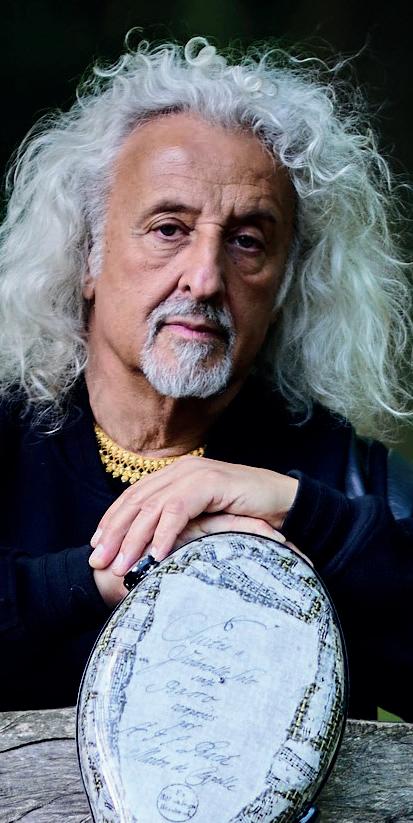
Truly a world-class musician and a regular guest at most major international festivals, he has collaborated with such conductors as Leonard Bernstein, Carlo Maria Giulini, Lorin Maazel, Zubin Mehta, Riccardo Muti, Giuseppe Sinopoli, Vladimir Ashkenazy, Daniel Barenboim, James Levine, Charles Dutoit, Yuri Temirkanov, Mariss Jansons, Valery Gergiev, Kirill Petrenko, Paavo Järvi and Gustavo Dudamel.
His musician partnerships have included artists such as Martha Argerich, Radu Lupu, Nelson Freire, Evgeny Kissin, Itzhak Perlman, Lang Lang, Peter Serkin, Gidon Kremer, Yuri Bashmet, Anne-Sophie Mutter, Vadim Repin, Maxim Vengerov, Joshua Bell, Julian Rachlin and Janine Jansen to name just a few.
As an exclusive Deutsche Grammophon artist for more than 30 years, he made over 40 recordings with such orchestras as the Vienna, Berlin and Israel Philharmonics, the London Symphony, L’Orchestre de Paris, Orpheus Chamber Orchestra, Chamber Orchestra of Europe and others. Maisky’s recordings have enjoyed worldwide critical acclaim and have been awarded the prestigious Record Academy Prize in Tokyo five times and the Echo Deutscher Schallplattenpreis three times, as well as the Grand Prix du Disque in Paris and the Diapason d’Or of the Year, and receiving several coveted Grammy nominations.
Official Mischa Maisky MISCHA MAISKY celloHANS GRAF
Music Director
RODOLFO BARRÁEZ
Associate Conductor
CHOO HOEY
Conductor Emeritus
LAN SHUI
Conductor Laureate
EUDENICE PALARUAN
Choral Director
WONG LAI FOON
Choirmaster
FIRST VIOLIN
(Position vacant) Concertmaster,
GK Goh Chair
Kong Zhao Hui1
Associate Concertmaster
Chan Yoong-Han2
Fixed Chair
Cao Can*
Chen Da Wei
Duan Yu Ling
Foo Say Ming
Jin Li
Kong Xianlong
Cindy Lee
Karen Tan
William Tan
Wei Zhe
Ye Lin*
Zhang Si Jing*
SECOND VIOLIN
Tseng Chieh-An Principal
Michael Loh Associate Principal
Nikolai Koval*
Sayuri Kuru
Hai-Won Kwok
Chikako Sasaki*
Margit Saur
Shao Tao Tao
Wu Man Yun*
Xu Jueyi*
Yeo Teow Meng
Yin Shu Zhan*
Zhao Tian
VIOLA
Manchin Zhang Principal
Guan Qi Associate Principal
Gu Bing Jie* Fixed Chair
Joyce Huang
Marietta Ku
Luo Biao
Julia Park
Shui Bing
Janice Tsai
Dandan Wang
Yang Shi Li
CELLO
Ng Pei-Sian Principal, The HEAD Foundation Chair
Yu Jing Associate Principal
Guo Hao Fixed Chair
Chan Wei Shing
Jamshid Saydikarimov
Song Woon Teng
Wang Yan
Wu Dai Dai
Zhao Yu Er
DOUBLE BASS
Yang Zheng Yi Associate Principal
Karen Yeo Fixed Chair
Olga Alexandrova
Jacek Mirucki
Guennadi Mouzyka
Wang Xu
FLUTE
Jin Ta Principal, Stephen Riady Chair
Evgueni Brokmiller Associate Principal
Roberto Alvarez
Miao Shanshan
PICCOLO
Roberto Alvarez Assistant Principal
OBOE
Rachel Walker Principal
Pan Yun Associate Principal
Carolyn Hollier
Elaine Yeo
COR ANGLAIS
Elaine Yeo Associate Principal
CLARINET
Ma Yue Principal
Li Xin Associate Principal
Liu Yoko
Tang Xiao Ping
BASS CLARINET
Tang Xiao Ping Assistant Principal
BASSOON
Marcelo Padilla^ Principal
Liu Chang Associate Principal
Christoph Wichert
Zhao Ying Xue
CONTRABASSOON
Zhao Ying Xue Assistant Principal
HORN
Austin Larson Principal
Gao Jian Associate Principal
Jamie Hersch Associate Principal
Marc-Antoine Robillard Associate Principal
Bryan Chong^
Hoang Van Hoc
TRUMPET
Jon Paul Dante Principal
David Smith Associate Principal
Lau Wen Rong
Nuttakamon Supattranont
TROMBONE
Allen Meek Principal
Damian Patti Associate Principal
Samuel Armstrong
BASS TROMBONE
Wang Wei Assistant Principal
TUBA
Tomoki Natsume Principal
TIMPANI
Christian Schiøler Principal
Mario Choo
PERCUSSION
Jonathan Fox Principal
Mark Suter Associate Principal
Mario Choo
Lim Meng Keh
HARP
Gulnara Mashurova Principal
With deep appreciation to the Rin Collection for their generous loan of string instruments. Musician on temporary contract
Kong Zhao Hui performs on a J.B. Guadagnini of Milan, c. 1750, donated by the National Arts Council, Singapore, with the support of Far East Organization and Lee Foundation.
Chan Yoong-Han performs on a David Tecchler, Fecit Roma An. D. 1700, courtesy of Mr G K Goh. Musicians listed alphabetically by family name rotate their seats on a per programme basis.
CHLOE CHUA PLAYS PAGANINI | 2 SEP 2023
FIRST VIOLIN
Yusuke Hayashi Guest Concertmaster
Lim Shue Churn
SECOND VIOLIN
Wilford Goh
Martin Peh
VIOLA
Yasuo Hayashi
Lan Tiantian
Yeo Jan Wea
CELLO
James Ng
DOUBLE BASS
Jeremy Watt Guest Principal
Ma Li Ming
OBOE/COR ANGLAIS
Celia Craig
HARP
Charity Kiew
ORGAN
Joanna Rajamal Paul
PRESIDENT'S YOUNG PERFORMERS CONCERT | 23 SEP 2023
FIRST VIOLIN
Lim Shue Churn
Edward Tan
SSO GALA: MISCHA MAISKY AND HAN-NA CHANG | 29 & 30 SEP 2023
FIRST VIOLIN
Ma Jun Yi Guest Concertmaster


Sat, 2 Sep 2023
Esplanade Concert Hall
Singapore Symphony Orchestra
Singapore Symphony Chorus1
Singapore Symphony Youth Choir1
Mario Venzago conductor
Eudenice Palaruan Choral Director
Wong Lai Foon Choirmaster
Chloe Chua violin / Artist-In-Residence2
ROSSINI PAGANINI
Overture to Il viaggio a Reims
Violin Concerto No. 1 in D major, Op. 62
Intermission
Autograph session with Chloe Chua at Foyer, Level 1
DEBUSSY VAUGHAN WILLIAMS
Nocturnes
Toward the Unknown Region1 SSO Premiere
8 mins
35 mins
20 mins
25 mins
14 mins
Concert Duration: approximately 2 hrs (including 20 mins intermission)
CHECK-IN TO TONIGHT'S CONCERT
Scan this QR code with the Singapore Symphony Mobile App.

Lost luggage. Delayed transport that eventually does not turn up. A group of European dignitaries stranded at an inn, unable to continue their journey to a coronation in Reims: this sums up the situation in Il viaggio a Reims, Rossini’s last opera in Italian. Commissioned as part of the celebrations surrounding the coronation of King Charles X of France in 1825, Rossini had pulled out all the stops in trying to showcase his genius to the French public, writing for all the greatest voices of the day – 14 soloists, chorus, and orchestra – with the intention of retiring the work after its run of performances. As such, he even recycled some of the material into the more popular (and far superior) opera Le Comte Ory a number of years later.
After falling into obscurity, Il viaggio a Reims was only rediscovered and painstakingly reconstructed in the 1970s. In 1938, when a work titled “Gran Sinfonia to Il viaggio a Reims” was published in Milan and premiered by no less than Richard Strauss conducting at the Teatro alla Scala, everyone supposed that it was the only surviving piece of the opera. However, when the original manuscript resurfaced in the 1970s, they did not include this overture or any other for that matter. Contemporary reviews from 1825 also mentioned the lack of an overture.
Mislabelled or not, this overture has become a beloved part of orchestral repertoire. With all its quintessential Rossini features such as the grand opening leading to the faster section, as well as the “Rossini crescendo”, there could be no doubt as to its composer.
flute, piccolo, 2 oboes, 2 clarinets, 2 bassoons, 2 horns, 2 trumpets, 3 trombones, timpani, bass drum, cymbals, triangle, strings
World Premiere of Opera
19 Jun 1825, Paris
First performed by SSO
7 Aug 1998
If there were to be a real-life example of TwoSet Violin’s semi-mythical Ling Ling, it would be Niccolò Paganini, the OG superstar virtuoso and the first to make a following out of his stage persona instead of his repertoire. Paganini’s father had recognised his son’s natural talent early, and made him practise all day long, even withholding meals if he thought the results were not good enough.
With such strict guidance and all that practice, Paganini rapidly exhausted all the virtuoso works in the violin repertoire. Finding them insufficiently virtuosic, he decided to start writing his own, incorporating new techniques and tricks he had come up with. Part of Paganini’s success was his own carefully curated image, and the mystery he shrouded himself with. He never let anyone hear him practise, always performed in all black with dishevelled hair and a gaunt appearance. He neither confirmed nor denied claims that he sold his soul to the devil in exchange for his skills, earning him his nickname, the Devil’s Violinist.
For all that he was, he lived up to his own hype, with seemingly nothing he could not do. Where others played harmonics, he played double-stopped harmonics; where others wrote octave double-stops, he wrote tenths. He invented a technique of plucking notes with the left hand, and became known
for the ricochet technique – where the bow would bounce quickly across the strings: all of which can be found in this first concerto that he wrote.
Taking a leaf out of Rossini’s book, Paganini’s concerto is written in a bel canto style and features all the theatricality of an opera. Its outer movements are grand, comical and lively, allowing the violin to display both its singing quality and virtuosic fireworks. The middle movement is an expressive aria, accompanied by pizzicato strings imitating the sound of the guitar, another instrument that Paganini played. The finale brings back all the tricks in Paganini’s book, as though a parade of all the different characters.
flute, 2 oboes, 2 clarinets, bassoon, 2 horns, 2 trumpets, bass trombone, strings
World Premiere 1815 or 1819
First performed by SSO 15 Aug 1980 (Petru Csaba, violin)
Nuages (Clouds)
Fêtes (Festivals)
In the last years of the 19th century, Debussy considered writing some pieces for solo violin and orchestra, and even communicated with the great Belgian violinist Eugène Ysaÿe about the project, but if Debussy ever composed music in this form, it has been lost. Between 1897 and 1899, he recast the material for orchestra alone. The first two nocturnes received their first performance in Paris on 9 December, 1900; all three were performed together for the first time in October of the following year. Even today it is common to find performances of just the first two nocturnes, estranged from “Sirènes”, since Debussy incorporated into the latter a chorus of female voices that otherwise has nothing to sing in the concert unless another choral work is scheduled. But what a magical, haunting effect this chorus has! Though wordless (hence, treated like another instrumental sonority), it captures to perfection the mysterious, evocative charms of those Greek mythological creatures – half woman, half bird – who lured sailors to their doom with irresistibly beautiful song. The pioneering use of this special effect bore fruit in later works such as Ravel’s Daphnis et Chloé and Holst’s The Planets.
The visual impressions engendered by each of these mood pieces are for each listener to create for him- or herself. Debussy left a brief guide explaining what he intended to convey in sound:
Nuages renders the immutable aspect of the sky and the slow, solemn motion of the clouds, fading into poignant gray softly touched with white. Fêtes gives us the vibrating, dancing rhythm of the atmosphere with sudden flashes of light. There is also the episode of the procession (a dazzling fantastic vision) which passes through the festive scene and becomes merged in it. … Sirènes depicts the sea and its countless rhythms and presently, amongst waves silvered by the moonlight, is heard the mysterious song of the Sirens as they laugh and pass on.
Instrumentation
3 flutes (1 doubling on piccolo), 2 oboes, cor anglais, 2 clarinets, 3 bassoons, 4 horns, 3 trumpets, 3 trombones, tuba, timpani, field drum, cymbals, 2 harps, strings, women’s chorus (Sirènes)
World Premiere (complete work)
27 Oct 1901, Paris
First performed by SSO
20 Jan 2006
British music in the late 1890s was liberating itself from heavy German influence. Those at the forefront of this movement were Edward Elgar and Hubert Parry, both of whom wrote choral music in a quintessentially British style; the latter even encouraging Vaughan Williams to write music “as befits an Englishman and democrat”.
Vaughan Williams was an undergraduate at Cambridge when he was introduced to the poetry of American poet Walt Whitman by his contemporary Bertrand Russell. The subjects of Whitman’s poetry – love, freedom, human dignity and even mysticism – intrigued Vaughan Williams, who acquired and studied editions of Whitman’s Leaves of Grass.
The strength of Whitman’s writing led Vaughan Williams’ contemporary Frederick Delius to write, in 1903, a large-scale musical work Sea Drift, based on Whitman’s poetry of the sea. Himself inspired by this, Vaughan Williams considered writing such a work as well, tentatively titling it “Songs of the Sea”. However, unable to bring this to fruition, Vaughan Williams turned to another poem from Leaves of Grass called Whispers of Heavenly Death, setting a portion of its verses as a “Song for Chorus and Orchestra” titled Toward the Unknown Region in 1906.
The work was an immediate success, due in most part to the masterful setting of the text to music, creating something that was greater than the sum of its parts. The music starts out apprehensive and uncertain, in modal harmonies reminiscent of British
folk song. Energised by the irresistible draw of discovery, the music takes flight at the fourth stanza, no longer having “any bonds bounding us”, towards a confident, striding melody that brings the work to an uplifting close.
Walt Whitman’s humanist vision of daring and endeavour, a heartfelt call to (re)discover our spirit of adventure, is a message as relevant to his time as it is to ours.
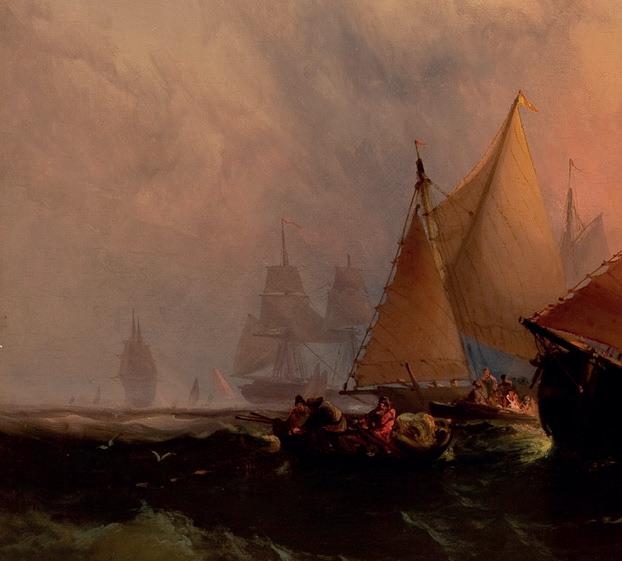
Programme notes by Natalie Ng (Rossini, Paganini, Vaughan Williams) and Robert Markow (Debussy)
Instrumentation
3 flutes, 2 oboes, cor anglais, 2 clarinets, bass clarinet, 2 bassoons, 4 horns, 3 trumpets, 3 trombones, tuba, timpani, 2 harps, organ, strings
World Premiere
10 Oct 1907, Leeds
Darest thou now, O Soul, Walk out with me toward the unknown region, Where neither ground is for the feet nor any path to follow?
No map there, nor guide, Nor voice sounding, nor touch of human hand, Nor face with blooming flesh, nor lips, nor eyes, are in that land.
I know it not, O Soul; Nor dost thou, all is a blank before us; All waits, undreamed of in that region, that inaccessible land.
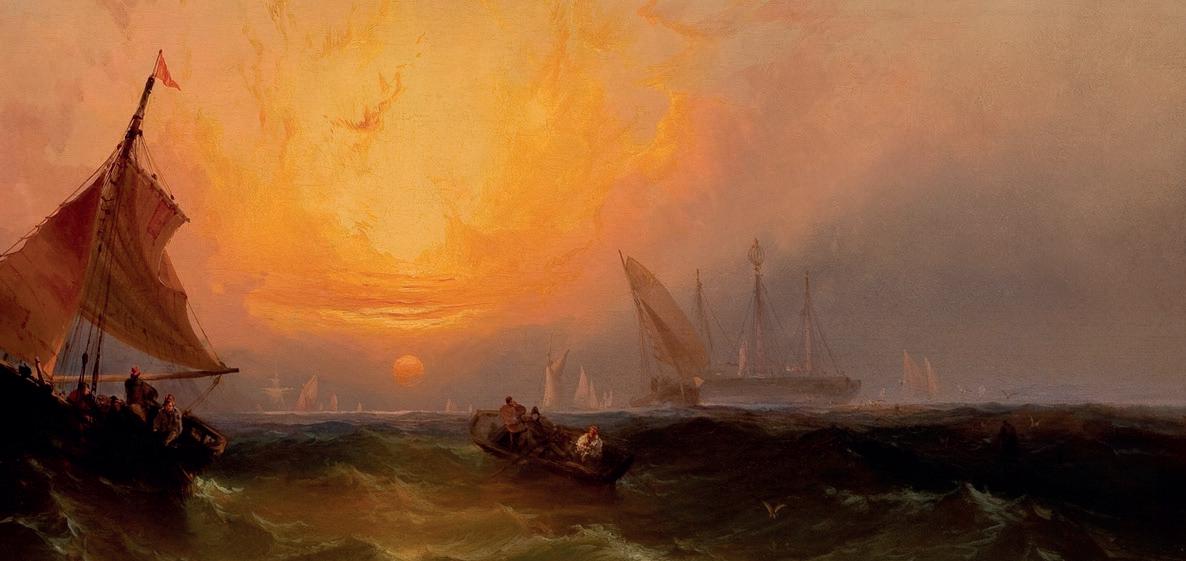
Till when the ties loosen, All but the ties eternal, time and space, Nor darkness, gravitation, sense, nor any bounds bounding us.
Then we burst forth, we float, In time and space, O Soul, prepared for them, Equal, equipt at last, (O joy! O fruit of all!) them to fulfil, O Soul.
Sat, 23 Sep 2023
Victoria Concert Hall
Singapore Symphony Orchestra
Rodolfo Barráez Associate Conductor
Hao Jia piano*
RACHMANINOFF MENDELSSOHN
Piano Concerto No. 3 in D minor, Op. 30*
Intermission
Symphony No. 3 in A minor, Op. 56 “Scottish”
39 mins
20 mins
40 mins
Concert Duration: approximately 2 hrs (including 20 mins intermission)
CHECK-IN TO TONIGHT'S CONCERT Scan this QR code with the Singapore Symphony Mobile App.
In 1909, the 36-year-old Rachmaninoff was at the height of his career as composer and pianist. It was time to conquer America, and for this important visit he composed his Third Piano Concerto, which he wrote during the summer months at his country estate, Ivanovka. In October, he set sail for the New World, but not having had time to learn the piano part, he resorted to practising on a “dumb” (silent) piano he took on board with his baggage. The concerto was greeted warmly, though not rapturously, at its premiere on 28 November, 1909, with Walter Damrosch conducting the Symphony Society of New York. As soloist, Rachmaninoff also performed the concerto with Gustav Mahler conducting the New York Philharmonic, on which occasion Rachmaninoff was enormously impressed with Mahler’s abilities as a conductor.
The Third Concerto proudly carries a reputation for being one of the most difficult, expansive, brilliant and romantic in the repertory of piano concertos. It is also one of Rachmaninoff’s longest and structurally most complex orchestral works. Like the Second Symphony, many of the concerto’s melodic ideas have their seeds in the opening motif. Also like the symphony, there is a strong interrelation between the movements, as material in each movement recurs in varied form in succeeding movements. In mood and style, the music is thoroughly grounded in the 19th-century Russian romantic tradition. Nicolas Slonimsky’s assessment of Rachmaninoff in general
serves to underscore the concerto’s qualities in particular: “… melancholy moods prevail, and minor keys predominate … there is an unmistakable stamp of Rachmaninoff’s own individuality in the broad rhapsodic sweep of the melodic line, and particularly in the fully expanded sonorities and fine resonant harmonies of his piano writing.”
The Concerto opens with a disarmingly simple theme. Rachmaninoff said that it “wrote itself … I wanted to ‘sing’ the melody on the piano, as a singer would sing it.” However, a musicologist-friend of the composer, Joseph Yasser, believed the theme was derived from an ancient monastic chant of the Russian Orthodox Church, a claim Rachmaninoff denied. The second subject consists of a gently playful staccato idea for the orchestra answered by the soloist, from which evolves a broadly lyrical theme in the piano. The development section begins as did the opening, with the soloist becoming increasingly predominant. A cadenza of prodigious difficulty and enormous proportions contains within it the movement’s recapitulation, a most unorthodox procedure. An alternate view holds that the recapitulation consists only
it
“wrote itself … I wanted to ‘sing’ the melody on the piano, as a singer would sing it.”
of the brief epilogue beginning with the restatement of the opening bars of the movement, shared by piano and orchestra.
The slow movement reveals Rachmaninoff at his most melancholic, rhapsodic and nostalgic. The languid principal theme is reworked though a series of variations, a simple enough procedure in view of the structural complexities of the outer movements. This fact, as well as the generally more relaxed mood, may well have been responsible for the movement’s title “Intermezzo.” Near the end is a faster, scherzando passage whose woodwind lines are melodically related to the first theme of the first movement. The darkly melancholic mood of the closing pages is abruptly banished by a brilliant flourish, and the third movement is launched without pause.
Themes as well as rhythmic patterns of this expansive finale are largely derived from or related to material of the first movement. The finale abounds in energetic rhythms, bravura flourishes, scintillating passage work and brilliant effects for soloist and orchestra alike, although Rachmaninoff does not fail to include a characteristically lyric, soaring theme as well. The long coda provides a fitting conclusion to a grandiose concerto, “growing gradually in intensity,” writes Herbert Elwell, “to sonorous heights in a lofty peroration.”
2 flutes, 2 oboes, 2 clarinets, 2 bassoons, 4 horns, 2 trumpets, 3 trombones, tuba, timpani, bass drum, cymbals, suspended cymbal, snare drum, strings
World Premiere
28 Nov 1909, New York
First performed by SSO
25 Jul 1980 (Eteri Andjaparidze, piano)
Symphony No. 3 in A minor, Op. 56 “Scottish” (1842)
I II III IV
Andante con moto – Allegro un poco agitato
Vivace non troppo
Adagio
During July and August of 1829, the 20-year-old Mendelssohn enjoyed himself touring Scotland. As he was an inveterate letter writer, we know in considerable detail his reactions, mostly favourable, to the Highland country, its weather, and its people with their “long, red beards, tartan plaids, bonnets and feathers, naked knees, and their bagpipes in their hands.” One day in Edinburgh he came upon the picturesque ruins of the Palace of Holyrood, in which Mary, Queen of Scots, had once lived. On 30 July, Mendelssohn, the impressionable young tourist, wrote home that:
“In the darkening twilight today, [I] went to the Palace where Queen Mary lived and loved. There is a little room to be seen there with a spiral staircase at its door. That is where they went up and found Rizzio in the room, dragged him out, and three chambers away there is a dark corner where they murdered him. The chapel beside it has lost its roof and is overgrown with grass and ivy, and at that broken altar Mary was crowned Queen of Scotland. Everything there is ruined, decayed, and open to the clear sky. I believe that I have found there today the beginning of my Scottish Symphony.”
29

The “beginning of my Scottish Symphony” consisted of a scrap of paper containing a few bars of music. That is all that became of the symphony until twelve years later, by which time Mendelssohn had already been to Italy and had written his Italian Symphony. In 1831, he wrote from Italy that he could “not find his way back into the Scottish fog mood,” a quite understandable condition given Italy’s sunny climes. The Scottish Symphony was eventually completed in January of 1842, making it Mendelssohn’s last major orchestral work. Hence, though called “No. 3,” it is really the fifth of his five important symphonies. (There also exist twelve works belonging to his juvenilia.) The symphony received its premiere in Leipzig on 3 March, 1842, with Mendelssohn on the podium.
Is there anything particularly “Scottish” about the work? Well, yes and no. The degree of “Scottishness” is dependent on the individual listener’s susceptibility to programmatic suggestion and on hindsight. The sombre, melancholic opening is certainly at least suggestive of the brooding, misty Scottish land; the ebullient clarinet theme of the Scherzo may be based on a Scottish folk air, since the scale pattern corresponds to that of the country’s folk music; the leaping, vigorous, dance-like main theme of the finale is thought by some to be a musical representation of the gathering of the clans.
None of this is conclusive, of course. But we do know that Mendelssohn had little sympathy with native folk idioms, and had he not spoken of it as his “Scottish” symphony, probably no one would have guessed as much. Scottish or not though, this work is fully representative of Mendelssohn at his best. Hans von Bülow thought it to be, in 1877, still one of the
finest symphonies since Beethoven. If our estimation today is not quite as high as von Bülow’s, we can still respect this classically chiselled symphony for its gentle charms, melodiousness and imaginative ideas.
Programme notes by Robert MarkowInstrumentation
2 flutes, 2 oboes, 2 clarinets, 2 bassoons, 4 horns, 2 trumpets, timpani, strings
World Premiere
3 Mar 1842, Leipzig
First performed by SSO
14 Jul 1979

Fri & Sat, 29 & 30 Sep 2023
Victoria Concert Hall
Singapore Symphony Orchestra
Han-Na Chang conductor
Mischa Maisky cello*
Siegfried Idyll
Cello Concerto No. 1 in A minor, Op. 33*
Intermission
MOZART
Symphony No. 41 in C major, K. 551 “Jupiter”
18 mins
19 mins
20 mins
31 mins
Concert Duration: approximately 1 hr 45 mins (including 20 mins intermission)
CHECK-IN TO TONIGHT'S CONCERT Scan this QR code with the Singapore Symphony Mobile App.
Autograph session with Mischa Maisky during intermission at the foyer, level 2. AIn one of his rare moments of sweetness, Wagner composed the Idyll as a birthday present for his second wife Cosima. His son Siegfried had just been born the previous year, and on Christmas Day 1870, a small ensemble from the Zürich Tonhalle Orchestra played in the Wagner residence to wake Cosima. “Music, what music!” she would later write of the event, and called it the “Symphonic Birthday Greeting” in her diary.
and instrumentation. Much of the opening is for strings supported with subtle wind accents; when the music begins to turn another key, the melodic material is given to an oboe solo with string accompaniment instead. Wagner’s note-spinning is beautifully balanced, and shows how he was able to control music over long spans of time in his operas.
The music never gets overly dramatic, even though the uneasy silences that follow after the first big section lead to much more chromatic material as the orchestra begins swelling in waves. It takes a few more minutes before a big climax in the strings gives way to a hunting call on the horns, punctuated by woodwind solos on the clarinet and flute. The increasingly agitated swirling condenses into a confident march in C major before dissipating into the recapitulation, which is curtailed by an extremely tranquil fade-out.
The immediate personal significance aside, Wagner reused most of the music in the later opera Siegfried (naming his son after the legendary hero reveals Wagner’s preoccupations with folklore), and the music is given to the love duet between Brünnhilde and Siegfried. However, while Wagner preferred the smaller orchestration that would fit in his house, accumulating debt forced him to publish the Siegfried Idyll as a standalone piece for orchestra, as an “extract” from the whole opera.
Opening with a plush string texture, the long, unfolding melodies passing through the orchestra reveal Wagner’s skill at polyphony
flute, oboe, 2 clarinets, bassoon, 2 horns, trumpet, strings
World Premiere
25 Dec 1870
First performed by SSO
28 Jun 1979
a small ensemble from the Zürich Tonhalle
Orchestra played in the Wagner residence to wake Cosima. “Music, what music!” she would later write...
I II III
Allegretto con moto
Saint-Saëns took many years to become fully part of the French musical establishment, and this work, written when he was 37, was a big step for him, being premiered at the Paris Conservatoire in 1873. He broke new musical ground with this concerto, choosing to avoid the usual three-movement form in favour of a Lisztian single-movement of just under 20 minutes in length.
Right from the outset, the cello solo bursts to the forefront, with hurried triplets demanding the full attention of the audience. The orchestra only gets its turn after the soloist is done with a series of flashy runs and arpeggios, and though the solo returns again soon, both parts calm down into a lovely lyrical moment where Saint-Saëns introduces a singing second theme. But as the music develops, it becomes clear that the expected sonata form is nowhere to be seen: the music segues into an elegant minuet, and the concerto wanders happily into its “second movement”.
The muted tutti strings set the stage for the cello solo, and Saint-Saëns, in a nostalgic mood, recalls the 18th century with a sincere dance, almost like a set piece in a ballet. The orchestra turns back to the very first tune in a headlong rush, but this is further varied with a broad cello expansion of one of the melodic fragments from that theme. After this last moment of respite, Saint-Saëns allows both the orchestra and
soloist off their leashes, and the real finale begins. The composer, showing true mastery of his materials, mixes all the themes together in various combinations and ties it all up with an incredibly fast and virtuosic coda.
Rachmaninoff and Shostakovich adored this concerto, both of them considering it one of the best ever written. Throughout, SaintSaëns gives enough aural space around the soloist, and the accompaniment does not get in the way of the fireworks that the soloist has to produce; every note of the cello cuts through the orchestration clearly. Its effectiveness and lyricism ensured its immediate success, and it has become a firm favourite of great cellists throughout the ages.
Instrumentation
2 flutes, 2 oboes, 2 clarinets, 2 bassoons, 2 horns, 2 trumpets, timpani, strings
World Premiere
19 Jan 1873, Paris
First performed by SSO
31 Oct 1981 (Emanuel Gruber, cello)
Allegretto
Mozart’s incredible burst of productivity in the summer of 1788 produced three huge symphonies in the space of two months, in addition to two piano trios, a piano sonata (the famous “teaching” sonata K. 545 in C major) and a violin sonatina. No. 41, as the last of this trio and the culmination of his work in the symphonic form, is without doubt one of the greatest symphonies ever written in the history of orchestral music.
The study of Bach’s music had paid off richly by this time, and Mozart also possessed greater maturity to go with his new skills. The symphony begins simply, in Haydnesque manner. Mozart was familiar with the music of both Haydn brothers — and, over the halfhour span of his longest symphony, builds to a crackling fugue in the finale which continues to astonish listeners over 200 years later.
The symphony opens with the simplest elements: a scooping motion, followed by a melodic answer. From these Mozart calls forth a fanfare and, after a passage where trumpets feature prominently, a much more lyrical section follows. There is some very stormy music here, as Mozart plays with various orchestral combinations, but the second movement puts all that away for a much calmer spirit. The only symphony movement Mozart saw fit to use the “cantabile” description for, it is a sustained outpouring of pure melody.

The minuet that follows has a slight Austrian tinge to it, making it more like a “Ländler”. Mozart’s penchant for chromatic progressions peeks through here, but his true display of skill is reserved for the truly phenomenal fugue that comes near the end of the final movement. All the themes in this movement are presented separately and come together for a glorious moment of wonder. That fugue was to eventually prove a critical and popular success.
A piece with a reputation as outsized as this might seem to fit its nickname well, but in all probability, Mozart never heard the symphony performed, nor knew anything about the moniker (which has been theorised to originate from his impresario friend Salomon or from the Cramer publishing house). Critics and audiences alike were bowled over by it in the beginning of the 19th century, however, and its sheer scale certainly looked forward to the Romantic period.
Credit for the finest bon mot about this work might be due to Brahms, who, despite living in quaking fear of Beethoven’s shadow his whole life, remarked at the end of his life that “Beethoven’s first symphony did impress people colossally. But the last three symphonies by Mozart are much more important.”
Programme notes by Thomas Ang Instrumentation flute, 2 oboes, 2 bassoons, 2 horns, 2 trumpets, timpani, strings


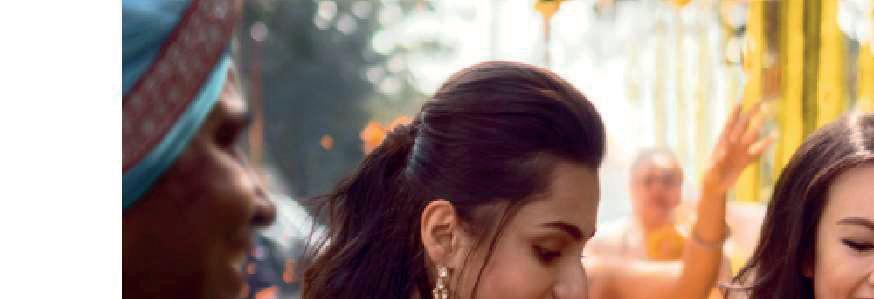








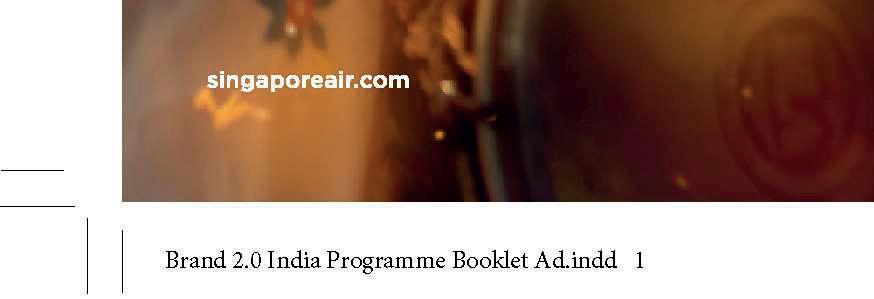
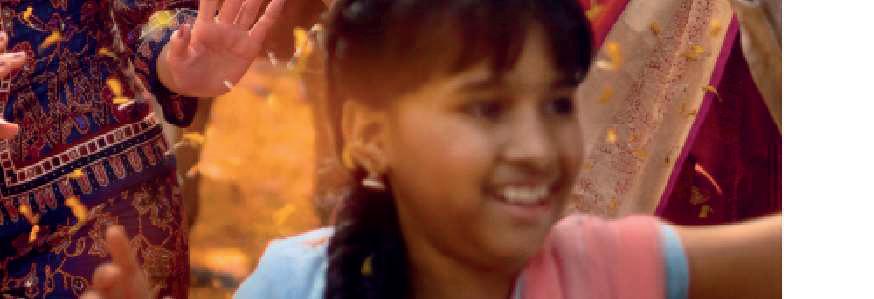



We would like to express our deepest appreciation to the following individuals and organisations who support our mission to create memorable shared experiences with music in the past year.
Without your support, it would be impossible for the SSO to continue to strive for artistic excellence and touch the hearts of audiences.

Tote Board Group
(Tote Board, Singapore Pools & Singapore Turf Club)
Mr & Mrs Goh Yew Lin
Stephen Riady Group of Foundations
Temasek Foundation
The HEAD Foundation
Yong Hon Kong Foundation
Anonymous (2)
Audemars Piguet
City Developments Limited
Embassy of France in Singapore
Dr & Mrs Antoine & Christina Firmenich
Foundation Of Rotary Clubs (Singapore) Ltd
Rod Hyland
JKhoo Consultancy Pte Ltd
Lee Foundation
Paige Parker & Jim Rogers
The Santosa Family
The New Eden Charitable Trust
Jacqueline Yeh
Bloomberg Singapore Pte Ltd
Vivian Chandran
Cara & Tamara Chang
Chng Hak-Peng
Geraldine Choong & Dennis Au
Edrington Singapore Pte Ltd
Far East Organization
Holywell Foundation
Kris Foundation
Dr Julie Lo
Dr Mendis Ajit Rohan
AIG Asia Pacific Insurance Pte Ltd
ATLAS, Singapore
Mahesh Buxani
Cavazos Tinajero Family
Prof Cham Tao Soon
Alan Chan
Prof Chan Heng Chee
Chang Julian
Mr & Mrs Choo Chiau Beng
Dr & Mrs Choy Khai Meng
CMIA Capital Partners Pte Ltd
DSGCP Mgt Pte Ltd
EFG Bank AG
F J Benjamin (Singapore) Pte Ltd
Karen Fawcett & Alisdair Ferrie
Dorian Goh & Rathi Ho
Hong Leong Foundation
Vanessa & Darren Iloste
Indosuez Wealth Management

Olivia Leong
LGT Bank (Singapore) Ltd
Liew Wei Li
Mavis Lim Geck Chin
Liu Chee Ming
Logos Holdco Pte Ltd
Marina Bay Sands
Christopher & Clarinda Martin
Devika & Sanjiv Misra
Kai Nargolwala
Ronald & Janet Stride
TOP International Holding Pte Ltd
Dr Paul Tseng
United Overseas Bank Ltd
VALIRAM
Geoffrey & Ai Ai Wong
Grace Yeh & Family
Yong Ying-I
Dr Thomas Zuellig & Mary Zuellig
Anonymous (1)
NEON Global
Nomura Asset Management Singapore
NSL Ltd
Dr Eddy Ooi
Ooi Huey Tyng
Pavilion Capital
Petrochemical Corporation of Singapore
Planworth Global Factoring (S'pore) Pte Ltd
Prada Singapore
Prima Limited
Alexey Rumyantsev
Priscylla Shaw
Martin Siah & Wendy Long
Prof Gralf & Silvia Sieghold
Andreas & Doris Sohmen-Pao
ST Telemedia
Tan Kong Piat (Pte) Ltd
Tan Meng Cheng Ivan
Jamie Thomas
Tower Capital Asia
Dr Knut Unger/ Luther LLP
Union Bancaire Privée, UBP SA
Andrew & Stephanie Vigar
Wong Hong Ching
Woodlands Memorial
Yee Chen Fah
Yasmin Zahid
ZEGNA
Anonymous (10)
#GivingBack Foundation
John & Eliza Bittleston
Bryan Carmichael
Dr Stanley Chia
Alfred Chua Cheng Huat
KC Chuang
Prof Arnoud De Meyer
Jerry Gwee
Dr Guy Hentsch & G. Yu
Ho Bee Foundation
Steven & Liwen Holmes
Shawn Jeon
Katherine Kennedy-White
Dr & Mrs Adrian Koh
Lorinne Kon
Kelvin Leong
Dr Leong Keng Hong
Charmaine Lim

Marcelo Viccario Achoa & Silvia Bordoni
Jeanie Cheah
Evelyn Chin
Adrian Chua Tsen Leong
Hartley & Hong Lynn Clay
Coleads Business Consultants Pte Ltd
Guo Zhenru
Mr & Mrs Winston Hauw
Angela Huang & Geo Chen
Judy Hunt
Joumana Ariss Hamiyeh
Kaiyan Asplund & Family
Sajith Kumar
Lee Shu Yen
Lee Yeow Wee David
Viktor & Sonja Leendertz
Dr Darren Lim
Lim Kok Leong
Dr Victor Lim
JN Loh
Richard Loh
Prof Tamas Makany & Julie Schiller
Mak Hoe Kit
Frans & Marie-Pierre Mol
msm-productions
Ms Oang Nguyen & Dr Dang Vu
nTan Corporate Advisory Pte Ltd
Ong Kong Hong
Poh Tiong Choon Logistics Limited
PropertyGuru Group
David Ramli
Robin & Katie Rawlings
Ian & Freda Rickword
Bernard Ryan & Michael Rowe
Sembcorp Energy For Good Fund
Tan Seow Yen
The Gangoso Family
Manju Vangal & Arudra Vangal
David & Catherine Zemans
Anonymous (8)
Francoise Mei
Esme Parish & Martin Edwards
Preetha Pillai
Daniel Poller
Charles Robertson
Dr June & Peter Sheren
Dr Oskar & Linda Sigl
The Sohn Yong Family
Tibor Szabady
Tan Choon Ngee
Christopher SC Tan
Gillian & Daniel Tan
Tang See Chim
Anthony Tay
Teo Lay Lim
Amanda Walujo
Kris Wiluan
Eric Wong
Wicky Wong
Wong Yan Lei Grace
Anonymous (8)
Welby Altidor
Nicolas Amstutz
Brenda Ang
Ang Jian Zhong
Pauline Ang
Ang Seow Long
Oliver Balmelli
Lawrence & Celeste Basapa
Selina Boey
Chan Ah Khim
Cynthia Chee
Dr Jonathan Chee
Dr Christopher Chen
Chen Yang Chin & Margaret Chen

Cheng Eng Aun
Cheng Wei
Jase Cheok
Jason & Jennifer Chew
Peter Chew
Dr Faith Chia
Bobby Chin
Nicholas Chor
Chor Siew Chun
Lenny Christina
Kevin & Dr Iroshini Chua
Pierre Colignon
Khushroo Dastur
DCP
Linn de Rham
Dong Yingqiu
Mr & Mrs Jeremy Ee
Jamie Lloyd Evans
Henning Figge
Stephen Ray Finch
John & Pauline Foo
Fort Sanctuary
Christopher Franck
Gallery NaWei Pte Ltd
Gan Yit Koon
Goh Chiu Gak
Christopher & Constance Goh
Mrs Goh Keng Hoong
Michael Goh
P Goh
Prof Goh Suat Hong
Parthesh Gulawani
Richard Hartung
Linda Heng
Henry & Tiffany
Ho Jun Yi
Dr Ho Su Ling
HypeonHype
Jiang Wenzhu
Arjun Jolly
Duncan Kauffman
Ad Ketelaars
Ernest Khoo
Khor Cheng Kian
Belinda Koh Yuh Ling
In Memory of Timothy Kok Tse En
Winston & Valerie Kwek
Colin Lang
Lau Soo Lui
Dr & Mrs Winson Lay
Eugene & Caslin Lee
Kristen Lee
SC & WY Leong
Voon S Leong
Li Danqi & Liu Yi
Lisa Liaw
Edith & Sean Lim
Elaine Lim
Lim Hui Li Debby
Lim Yuin Wen
Rachel Lin
Angela Loh
Low Boon Hon
Alwyn Loy
Jin Lu
Bahareh Maghami
Mak Mei Zi April
Andre Maniam
Norbert Meuser
Dr Tashiya Mirando
Daniel Ng
Ng Wan Ching & Wong Meng Leong
Ngiam Shih Chun
Joy Ochiai
Matthew Ong
Monique Ong
Phua Siyu Audrey
Chris Pinnick & Josephine Jung
Lerrath Rewtrakulpaiboon
Robert Khan & Co Pte Ltd
Danai Sae-Han
Gayathri & Steven Santhi-McBain
Thierry Schrimpf
Farhana Sharmeen
Omar Slim
Small Story Singapore
Marcel Smit & Hanneke Verbeek
Soh Leng Wan
Sharon Son Songs
Linda Soo Tan
Serene & Lars Sorensen
Bernard Tan
Tan Cheng Guan
Tan Chin Beng
Edwin Tan
Dr Giles Tan Ming Yee
Gordon HL Tan
Jane Tan
Casey Tan Khai Hee
K.H. Tan
Lincoln Tan
Tan Pei Jie
Prof Tan Ser Kiat
Tan Yee Deng
Zeena Tan
Alex Tesei
Alicia Thian & Brian Bonde
Megan & Paul Vergé
Vidula Verma
Stephan Wang
Retno Whitty
Dr Wong Hin-Yan
World Future Enterprise Pte Ltd
Wu Peihui
Marcel & Melissa Xu
Peter Yap Wan Shern
Ye Xuan
Yong Seow Kin
Lei Zhang
Zhu Yulin
Anonymous (67)
This list reflects donations that were made from 1 July 2022 to 30 June 2023. We would like to express our sincere thanks to donors whose names were inadvertently left out at print time.
The Singapore Symphony Group is a charity and a not-for-profit organisation. Singapore tax-payers may qualify for 250% tax deduction for donations made. You can support us by donating at www.sso.org.sg/donate or www.giving.sg/sso.

SUPPORT THE SSO
How can you help?
DONOR RECOGNITION & PUBLIC ACKNOWLEDGEMENT
While SSO is supported partially by funding from the Singapore government, a significant part can only be unlocked as matching grants when we receive donations from the public. If you are in a position to do so, please consider making a donation to support your orchestra – Build the future by giving in the present.
As a valued patron of the SSO, you will receive many benefits.
Donations of $100 and above will entitle you to priority bookings, and discounts^ on SSG Concerts. For tax residents of Singapore, all donations may be entitled to a tax deduction of 2.5 times the value of your donation.
*Complimentary ticket benefits do not apply to Esplanade & Premier Box seats, or supporters who give through a fundraising event.
^Discounts are not applicable for purchase of Esplanade & Premier Box seats.
Through the SSO and its affiliated performing groups, we spread the love for music, nurture talent and enrich our diverse communities.
The Singapore Symphony Orchestra is a charity and not-for-profit organisation. To find out more, please visit www.sso.org.sg/support-us, or write to Nikki Chuang at nikki@sso.org.sg
We recognise major gifts that help sustain the future of the Singapore Symphony Group. The recognition includes naming of a position in the SSO or in our affiliated performance groups such as the Singapore National Youth Orchestra and the Singapore Symphony Choruses.
In July 2017, the SSO established the GK Goh Chair for the Concertmaster. Mr Goh Geok Khim and his family have been long-time supporters of the national orchestra. We are grateful for the donations from his family and friends towards this Chair, especially Mr and Mrs Goh Yew Lin for their most generous contribution.
Mr Igor Yuzefovich was the inaugural GK Goh Concertmaster Chair from July 2017 to June 2018. The position is currently vacant.
In recognition of a generous gift from The HEAD Foundation, we announced the naming of our Principal Cello, “The HEAD Foundation Chair” in November 2019. The Chair is currently held by Principal Cellist Ng Pei-Sian.
In recognition of a generous gift from Dr Stephen Riady, we announced in May 2022 the naming of our Principal Flute, “Stephen Riady Chair”. The position is currently held by our Principal Flutist Jin Ta.
For more information, please write to director_development@sso.org.sg.
 JIN TA PRINCIPAL FLUTE
JIN TA PRINCIPAL FLUTE
Form a special relationship with Singapore’s national orchestra and increase your brand recognition among an influential and growing audience.

We provide our Corporate Patrons with impressive entertainment and significant branding opportunities. Through our tailored sponsorship packages, corporates may benefit from:
• Publicity and hospitality opportunities at an SSO concert or your private event,
• Acknowledgement and mentions in SSO’s key publicity channels,
• National Arts Council (NAC) Patron of the Arts nominations
• Tax benefits.
Temasek Foundation
The HEAD Foundation
Stephen Riady Group of Foundations
Yong Hon Kong Foundation
Embassy of France in Singapore
Audemars Piguet
City Developments Limited
Foundation Of Rotary Clubs (Singapore) Ltd
JKhoo Consultancy Pte Ltd
Lee Foundation
The New Eden Charitable Trust
VALIRAM
Far East Organization
United Overseas Bank Ltd
Bloomberg Singapore Pte Ltd
Holywell Foundation
Kris Foundation
Raffles Hotel Singapore
SMRT Corporation
Singapore Airlines
Conrad Centennial Singapore
Symphony 924
Sponsorship packages start at $10,000 and can be tailored to your company’s branding needs.
We partner with various corporates through tailored in-kind sponsorship and exchange of services. Current and recent partnerships include Official Hotel, Official Airline, and we offer other exciting titles.
Our corporate advertising packages start at $2,500, with platforms such as the corporate e-newsletter Bravissimo, SSO’s website and concert booklets.
For more details, please write to Chelsea Zhao at chelsea.zhao@sso.org.sg.
GAO JIAN ASSOCIATE PRINCIPAL HORNCHAIR
Goh Yew Lin
BOARD OF DIRECTORS
Yong Ying-I (Deputy Chair)
Chang Chee Pey
Chng Kai Fong
Prof Arnoud De Meyer
Warren Fernandez
Kenneth Kwok
Liew Wei Li
Sanjiv Misra
Lynette Pang
Prof Qin Li-Wei
Geoffrey Wong
Yasmin Zahid
Yee Chen Fah
Andrew Yeo Khirn Hin
Goh Yew Lin (Chair)
Prof Arnoud De Meyer (Treasurer)
Geoffrey Wong
Yong Ying-I
HUMAN RESOURCES COMMITTEE
Yong Ying-I (Chair)
Chng Kai Fong
Prof Arnoud De Meyer
Heinrich Grafe
Doris Sohmen-Pao
INVESTMENT COMMITTEE
Geoffrey Wong (Chair)
Sanjiv Misra
David Goh
Alex Lee
AUDIT COMMITTEE
Yee Chen Fah (Chair)
Warren Fernandez
Lim Mei Jovi Seet
SNYO COMMITTEE
Liew Wei Li (Chair)
Prof Qin Li-Wei
Benjamin Goh
Vivien Goh
Dr Kee Kirk Chin
Clara Lim-Tan
SSO MUSICIANS’ COMMITTEE
Mario Choo
David Smith
Wang Xu
Christoph Wichert
Yang Zheng Yi
Elaine Yeo
Zhao Tian
SSO COUNCIL
Alan Chan (Chair)
Odile Benjamin
Prof Chan Heng Chee
Choo Chiau Beng
Dr Geh Min
Heinrich Grafe
Khoo Boon Hui
Lim Mei
JY Pillay
Dr Stephen Riady
Priscylla Shaw
Prof Gralf Sieghold
Andreas Sohmen-Pao
Prof Bernard Tan
Dr Tan Chin Nam
Tan Choo Leng
Tan Soo Nan
Wee Ee Cheong
Kenneth Kwok
Shirin Foo
Musriah Bte Md Salleh
Hans Sørensen (Head)
Artistic Administration
Jodie Chiang
Jocelyn Cheng
Michelle Yeo
Lynnette Chng
Ernest Khoo (Head)
Library
Lim Lip Hua
Avik Chari
Wong Yi Wen
Orchestra Management
Chia Jit Min (Head)
Peck Xin Hui
Kelvin Chua
Production Management
Noraihan Bte Nordin
Nazem Redzuan
Leong Shan Yi
Asyiq Iqmal
Ramayah Elango
Khairi Edzhairee
Khairul Nizam
Kok Tse Wei (Head)
Community Engagement
Kua Li Leng (Head)
Erin Tan
Whitney Tan
Samantha Lim
Terrence Wong
Choral Programmes
Kua Li Leng (Head)
Regina Lee
Chang Hai Wen
Mimi Syaahira
Singapore National Youth Orchestra
Tang Ya Yun
Tan Sing Yee
Ridha Ridza
ABRSM
Patricia Yee
Lai Li-Yng
Joong Siow Chong
Freddie Loh
May Looi
William Teo
Development
Chelsea Zhao (Head)
Nikki Chuang
Sharmilah Banu
Digital and Marketing Communications
Cindy Lim (Head)
Chia Han-Leon
Calista Lee
Myrtle Lee
Hong Shu Hui
Jana Loh
Sherilyn Lim
Elizabeth Low
Corporate Communications
Anderlin Yeo
Elliot Lim
Customer Experience
Randy Teo
Dacia Cheang
Joy Tagore
CORPORATE SERVICES
Finance, IT & Facilities
Rick Ong (Head)
Alan Ong
Goh Hoey Fen
Loh Chin Huat
Md Zailani Bin Md Said
Human Resources & Administration
Valeria Tan (Head)
Janice Yeo
Fionn Tan
Organisation Development
Lillian Yin



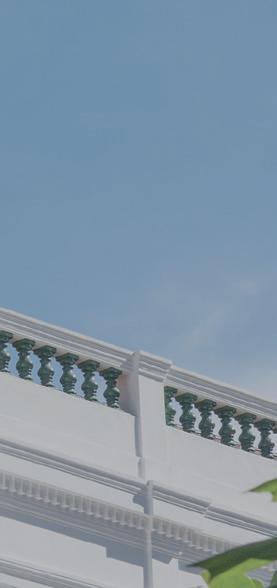






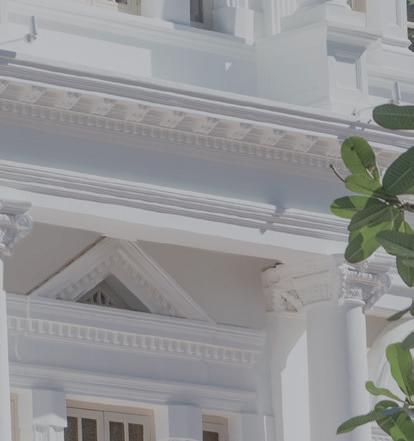






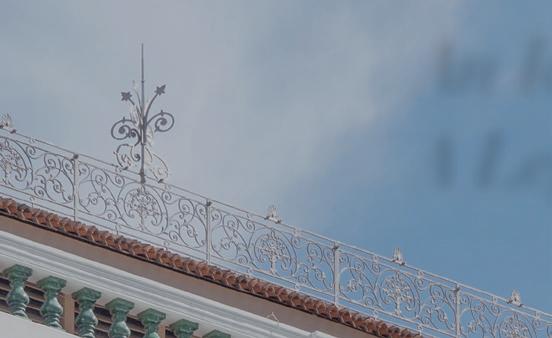



The mission of the Singapore Symphony Group is to create memorable shared experiences with music. Through the SSO and its affiliated per forming groups, we spread the love for music, nur ture talent and enrich our diverse communities. The Singapore Symphony Orchestra is a charity and not-for-profit organisation. You can suppor t us by donating at www.sso.org.sg/donate.
